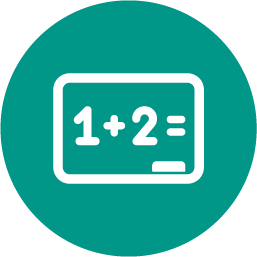
For each of the procedures described in the table below, identify the audit procedure per formed and classification of the audit procedure using the following:
Audit Procedures: Classification of Audit Procedure
(I) Analytical procedure (9) Substantive procedures
(2) Confirmation (I0) Test of controls
(3) Inquiry
(4) Inspection of recordsordocuments
(5) Inspection of tangible assets
(6) Observation
(7) Recalculation
(8) Reperformance
Procedure Audit Procedure Classification of Audit Procedure
a. Requested responses directly from customers as to amounts due.
b. Compared total bad debts this year with the totals for the previous two years.
c. Questioned management about likely total uncollectible accounts.
d. Watched the accounting clerk record the daily deposit of cash receipts.
e. Examined invoice to obtain evidence in support of the ending recorded balance of a customer.
f. Compared a sample of sales invoices to credit files to determine whether the customers were on the approved customer list.
g. Examined a sample of sales invoices to see if they were initialized by the credit manager indicating credit approval.

Answers: 3


Another question on Business



Business, 22.06.2019 21:20
White truffles are a very prized and rare edible fungus that grow naturally in the countryside near alba, italy. suppose that it costs $200 per day to search for white truffles. on an average day, the total number of white truffles (t) found in alba is t = 20x − x 2 , where x is the number of people searching for white truffles on that day. white truffles can be sold for $100 each. if there is no regulation, how many more people will be searching for white truffles than the socially optimal number?
Answers: 1

Business, 23.06.2019 00:00
1. consider a two-firm industry. firm 1 (the incumbent) chooses a level of output qı. firm 2 (the potential entrant) observes qı and then chooses its level of output q2. the demand for the product is p 100 q, where q is the total output sold by the two firms which equals qi +q2. assume that the marginal cost of each firm is zero. a) find the subgame perfect equilibrium levels of qi and q2 keeping in mind that firm 1 chooses qi first and firm 2 observes qi and chooses its q2. find the profits of the two firms-n1 and t2- in the subgame perfect equilibrium. how do these numbers differ from the cournot equilibrium? b) for what level of qi would firm 2 be deterred from entering? would a rational firm 1 have an incentive to choose this level of qi? which entry condition does this market have: blockaded, deterred, or accommodated? now suppose that firm 2 has to incur a fixed cost of entry, f> 0. c) for what values of f will entry be blockaded? d) find out the entry deterring level of q, denoted by q1', a expression for firm l's profit, when entry is deterred, as a function of f. for what values of f would firm 1 use an entry deterring strategy?
Answers: 3
You know the right answer?
For each of the procedures described in the table below, identify the audit procedure per formed an...
Questions

Biology, 13.05.2021 03:30




Mathematics, 13.05.2021 03:30

History, 13.05.2021 03:30


Biology, 13.05.2021 03:30


Mathematics, 13.05.2021 03:30



Mathematics, 13.05.2021 03:30

Mathematics, 13.05.2021 03:30



Biology, 13.05.2021 03:30






